
By Elm Vandevorst. Photos: Badmintonphoto (archives)
GROUP W1:
With the clear favourite in both this subgroup and probably for the title, China’s opponents France and hosts Mexico are almost chanceless to progress. The current champion won, besides the team event, no fewer than four titles in the individual competition of the Asian Juniors. With such talented shuttlers as Bao Yixin (photo), Suo Di and Huang Yuxiang, all of them successful in the individual event of the Asian Juniors, their opponents have to perform better than ever just to avoid humiliation. Hopefully the crowd can still expect some tense matches. The host country still has some decent youngsters with for example current PanAm U17 champion Marina Ugalde. The French delegation did great at the Polish Junior just three months ago with Lucas Claerbout winning the boys’ singles. His teammate Lucas Corvee was victorious twice in both the boys’ and mixed doubles.
GROUP W2:
Japan, which ended in sixth place last year, are up against Central European opponents Germany and Austria this year. The Japanese boys and girls were unable to survive the group stage at the Asian Juniors after a close 2-3 defeat against India one month ago and will definitely try to do better in Guadalajara. The Germans can normally count on a very solid squad, but only their girls’ doubles pair Isabel Herttrich / Inken Wienefeld seems able to overcome the Japanese adversaries. Also the Austrians will have a very difficult time to win their upcoming matches. Yet one of their boys, Matthias Almer, won the Italian Junior just one week ago. Being on top of the world right now, the youngster playing for the Austrian club Gleisdorf can have a positive influence on the performances of his entire team.
 GROUP X1:
GROUP X1:
Fourth-seeded Indonesia will meet China in the semi-finals if everything goes according to plan for both powerhouses. The favourites beat the Indonesians at the Asian Juniors this year and at the previous edition of the World Juniors but China had to dig deep and was only able to overcome their opponents after a close 3-2 win. Has the Indonesian squad learnt from their earlier mistakes? First things first, with contests against Canada and South Africa. One of Canada’s most promising kids is Nyl Yakura, who won the U17 competition at the latest PanAm Junior. South-Africa will have the unachievable task to defend the honour of the “Rainbow Nation” against one of the outsiders for the gold medal.
GROUP X2:
The American continent is well represented with six teams out of twenty-four, Peru being one of them. The Peruvians are a strong nation within their own region, proven by their second place at the PanAm Juniors in 2009. Then again to beat either Chinese Taipei or England would be a huge surprise. Chinese Taipei is eager to improve last year’s result, when they surprisingly reached fourth place. The Asians overcame England at the World Juniors last year after a narrow 3-2 win. This time England might turn things around as they can still count on a big part of the 2009 team. One of them is Toby Penty, winner of the Dutch Junior in March and another one is Sarah Milne (photo), runner-up at that same event.
GROUP Y1:
The upcoming generation of Thai girls is one of the strongest ever. The results speak for themselves: 2010 Asian Junior runner-up Taerattanachai Sapsiree and both the gold and silver medal winners at 2009 World Junior championship Ratchanok Intanon and Porntip Buranaprasertsuk. The latest is no longer part of the junior team, but the Thailand can go very far. Or can the Netherlands bring the Thai dream to a close in the group stage? The Dutch teenagers came with a side of only six players, which could be a disadvantage. The third contender is Puerto Rico, for whom there is not one chance in a million that they will make it to the next round.
GROUP Y2:
South Korea is still the only country capable of ending the Chinese juniors’ hegemony, which they did in 2006. In front of an ecstatic home crowd, now celebrated shuttlers as LeeYong Dae, Yoo Hyun Young, and Hong Ji Hoon were for once best of the world. To surprise their longtime rivals again will be extremely difficult. Their boys’ doubles pair Kang Ji Wook and Choi Seung Il were the best at the most recent Asian Juniors. On the other hand, they were eliminated as early as the quarter-finals of the team event by Indonesia, with Choi and Kang dropping Korea’s third and final point. The matches against Hong Kong and Turkey will give a first indication just how fine this Korean team is.
 GROUP Z1:
GROUP Z1:
Close, but no cigar for second seeded Malaysia at the Asian Juniors last month: beaten in the final of the team event and in two finals of the individual event by, as always, Chinese opponents. Zulfadli Zulkifli (photo) and boys’ doubles pair Ow Yao Han / Yew Hong Kheng already showed the rest of the team that the tearing down the Great Wall of China is on the cards. Singapore, as well as the Dominican Republic, is unfortunate to be drawn in the same group as powerhouse Malaysia. They might have better luck in the Bimantara Cup, the individual event, commencing on the 20th of April.
GROUP Z2:
The most exciting group, at least on paper, includes India, Denmark and the United States. India should be the favourite as they’re the highest seed, but they face the heavy challenge of Europe’s highest seeded Denmark. One of those Danes is 16-year old Viktor Axelsen, who has already won almost everything on the junior level. His last victory was at the German Junior, but even more impressive was reaching the final in his first EBU-tournament in Stockholm. Also the U.S. has a very young and thriving player with Samantha Li, who won the silver medal at the U15 PanAm Junior. They, too, are technically their continent’s defending junior team champions, but they are missing the Wang sisters and Terrence Pang.
For complete live results from the 2010 Suhandinata Cup competition, CLICK HERE
![WORLD JUNIORS – Team Event Preview The epicentre of the international badminton scene normally moves in between the European and Asian continent. However for the upcoming World Junior Championships the best youngsters of 24 countries around […]](https://www.badzine.net/wp-content/uploads/Newsflash-thumbnail.png)
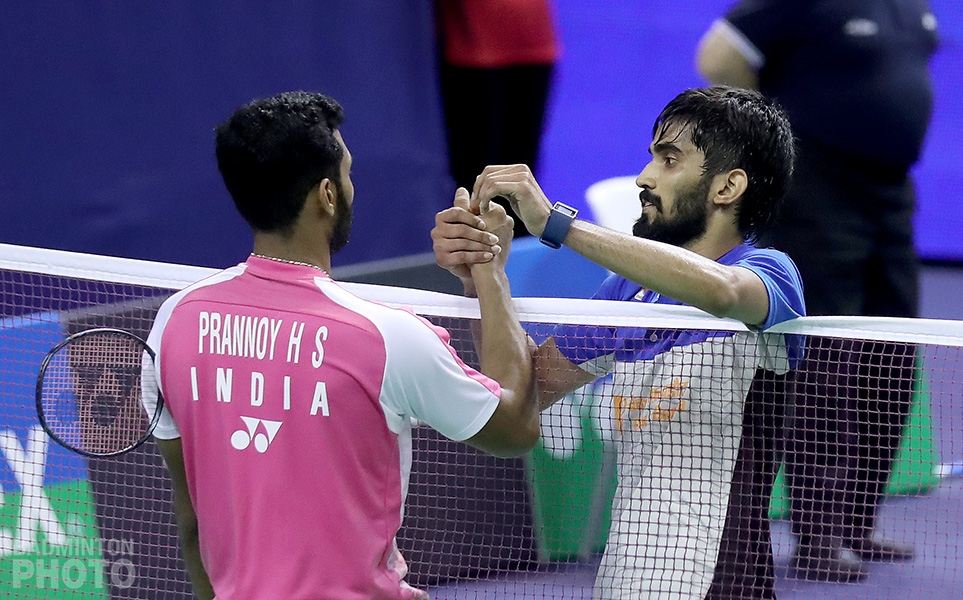

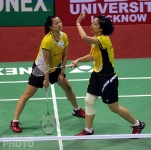
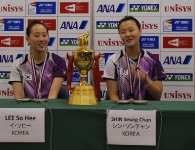
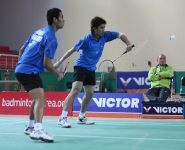
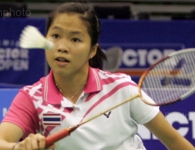
Leave a Reply